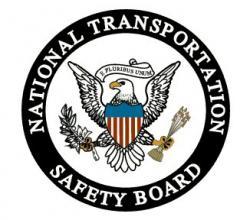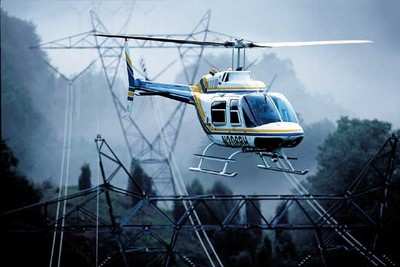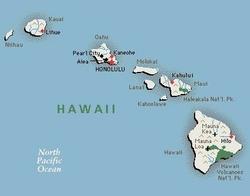Recommends New Procedures, Oversight For Part 91 Air Tour
Operators
 ANN has learned the NTSB determined
the probable cause of a 2004 fatal air tour helicopter crash in
Hawaii as "the pilot's decision to continue flight into an area of
turbulent, reduced visibility weather conditions, which resulted in
the pilot's spatial disorientation and loss of control of the
helicopter."
ANN has learned the NTSB determined
the probable cause of a 2004 fatal air tour helicopter crash in
Hawaii as "the pilot's decision to continue flight into an area of
turbulent, reduced visibility weather conditions, which resulted in
the pilot's spatial disorientation and loss of control of the
helicopter."
The accident occurred on September 24, 2004, when the Bell 206B
helicopter (file photo of type below), operated by Bali Hai
Helicopter Tours, Inc., conducting an air tour flight on the island
of Kauai, encountered adverse weather conditions and crashed into
mountainous terrain.
The pilot and all four passengers were killed in the crash.
"The air tour industry in Hawaii serves hundreds of thousands of
paying passengers each year and the public deserves an appropriate
level of safety when they embark on an air tour," said NTSB
Chairman Mark V. Rosenker. "It is my fervent hope that the FAA will
move quickly on our recommendations."
Experienced local pilots say terrain, mountain winds, and
rapidly changing cloud conditions make flying choppers on Kauai
challenging. A review of the eight weather-related chopper
accidents in Hawaii since 1994 found four involved pilots who were
relatively new to Hawaii. Three of those four -- including the
accident pilot -- had been flying there less than two months.
The board cited the pilot's inexperience in assessing local
weather conditions as a contributing factor, and recommended the
FAA develop and require a cue-based training program for pilots
that specifically addresses local weather phenomena and in-flight
decision-making.

Investigators found Bali Hai's helicopter tours departed from
Port Allen Airport, a general aviation airport with no facilities.
The company frequently kept pilots in the cockpit with rotors
turning -- to save wear on the engines -- between flights for seven
to eight hours a day without lunch or bathroom breaks.
Although the FARs permit such practices, The board concluded
they likely had an adverse impact on the pilot's decision-making
and performance. As such, the board recommended the FAA mandate
scheduling practices for air tour operators.
 In addition to challenging
scheduling practices, the board found significant discrepancies
with Bali Hai's maintenance procedures and logbooks. Because it
operated under 14 CFR Part 91, Bali Hai wasn't subject to required
periodic FAA inspections. In fact, the board found Bali Hai had
never been the subject of an FAA operations inspection prior to
this accident.
In addition to challenging
scheduling practices, the board found significant discrepancies
with Bali Hai's maintenance procedures and logbooks. Because it
operated under 14 CFR Part 91, Bali Hai wasn't subject to required
periodic FAA inspections. In fact, the board found Bali Hai had
never been the subject of an FAA operations inspection prior to
this accident.
The board concluded the public would benefit from additional
regulation for air tour operators flying under Part 91. It cited
the lack of FAA oversight as a contributing cause, and recommended
the FAA develop and enforce safety standards for all commercial air
tour operators to include, pilot training programs, special
airspace restrictions, maintenance policies, and flight scheduling
procedures -- none of which are required by the FAA's recently
released 14 CFR Part 136 air tour rules.
Finally the NTSB noted Hawaii's mountainous landscape, limited
air traffic control coverage, challenging weather, and high-density
air traffic make it a prime candidate for the Automatic Dependent
Surveillance-Broadcast (ADS-B) program and recommended the FAA
accelerate its implementation in Hawaii.
The board further recommended the FAA require Hawaii air tour
operators to equip their aircraft with ADS-B technology within one
year of the installation of a functional ADS-B system.
 Airborne 06.30.25: US v ADS-B Misuse, Natl STOL Fire, Volocopter Resumes
Airborne 06.30.25: US v ADS-B Misuse, Natl STOL Fire, Volocopter Resumes Aero-News: Quote of the Day (07.06.25)
Aero-News: Quote of the Day (07.06.25) ANN's Daily Aero-Linx (07.06.25)
ANN's Daily Aero-Linx (07.06.25) Classic Aero-TV: Portrait of the Army Aviation Heritage Foundation
Classic Aero-TV: Portrait of the Army Aviation Heritage Foundation Airborne-NextGen 07.01.25: Volocopter Returns, B23 Energic, Iran Tech In UAVs?
Airborne-NextGen 07.01.25: Volocopter Returns, B23 Energic, Iran Tech In UAVs?





